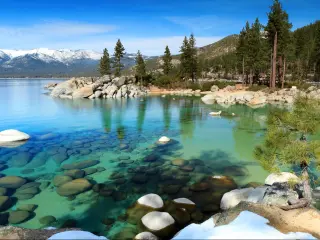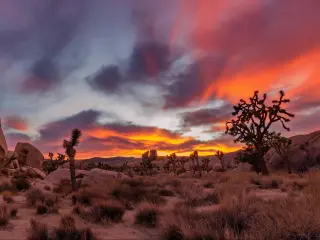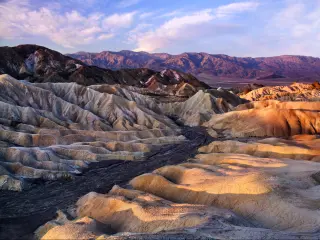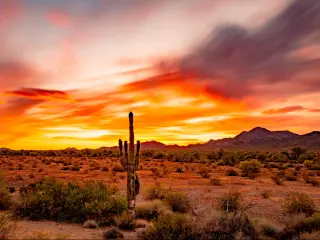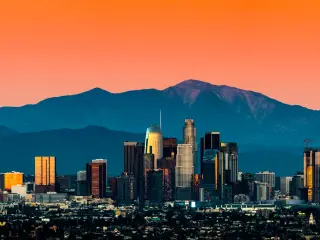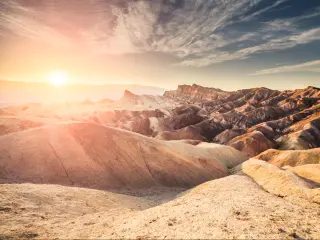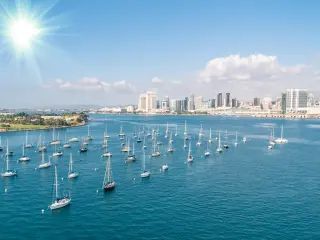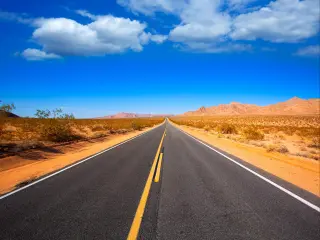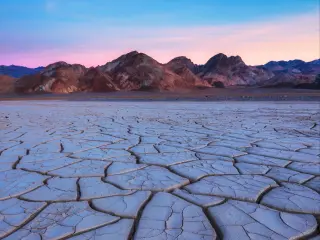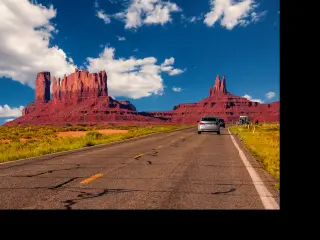What is the Safest Route to Big Bear?
Heading northeast out of Los Angeles, you'll soon reach the beautiful Big Bear Valley, one of the highlights of the San Bernardino Mountains. This popular alpine resort covers Big Bear City, which runs up to the shores of Big Bear Lake. Both the drive and your destination offer spectacular alpine scenery with views of the forested mountains reflected in the deep blue lake waters.
Big Bear is a stunning destination 40 miles from San Bernardino and 100 miles from Los Angeles. The winding roads through the mountains will be very different from city streets, but you have a choice of safe routes to the lake and city of Big Bear.
Most people head to the Big Bear region to enjoy outdoor pursuits. The Bear Mountain Ski Resort is a fabulous winter destination, while in summer you can lace up your hiking boots to explore the many trails through San Bernardino National Forest. Big Bear Lake itself is also a popular fishing spot.
Which route should I take to Big Bear?
| Route | Distance | Driving Time |
|---|---|---|
| CA-38 | 65 miles | 1 hour 30 minutes |
| CA-330 | 65 miles | 1 hour 40 minutes |
| CA-18 | 80 miles | 1 hour 45 minutes |
There are three main routes to reach Big Bear Lake, which all have a slightly different feel about them. We've mapped out routes that take you right through Big Bear Valley, so that they work whether you're starting in Lucerne or closer to San Bernardino.
Obviously, if you're only going as far as Big Bear City or Big Bear Lake, your travel time will be reduced a little!
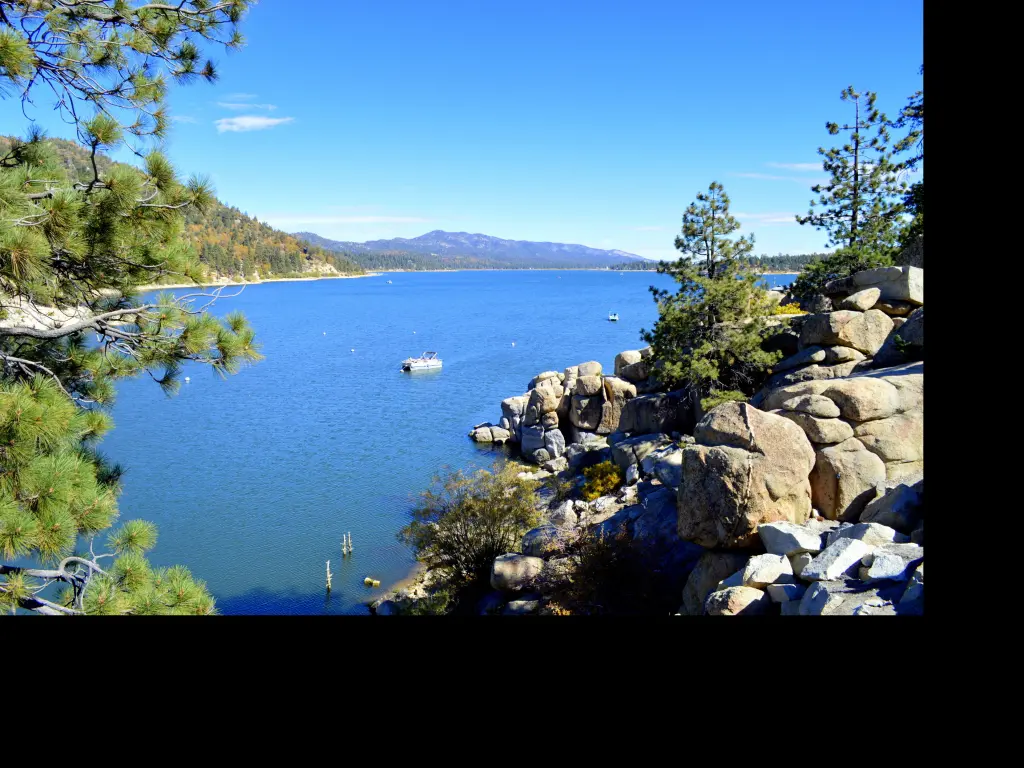
Driving to Big Bear via CA-18
In our view, the route to Big Bear Lake from Lucerne Valley is the least scary option of all. There are a few hairpin turns along the way, but on the whole it's a straighter drive. It's a slightly longer drive, but it avoids the tighter switchbacks that you encounter on the other routes to Big Bear.
It's fairly straightforward to navigate, too. Leave San Bernardino on I-15, then exit onto CA-18, which takes you through Lucerne Valley, then on to Big Bear City and Big Bear Lake.
For most of the way, this is a 2-lane road (one in each direction) with limited passing places. It's possible that you'll encounter slower-moving vehicles as you ascend before Big Bear Dam, but there are more passing places on this stretch of the drive.
It's a straightforward drive in summer, although you'll have to negotiate those tight switchbacks as you ascend into the mountains. Speed limits vary along the route for this reason, dropping as low as 15 MPH in places.
Some stretches of the road show signs of wear and tear, so stay alert as you make your way towards Big Bear Valley.
With low temperatures and a chance of snow, it's a different drive in winter. The road can become icy, and you'll need to follow California's regulations on snow tires and chains - keep on reading for more information on how to stay safe in these conditions.
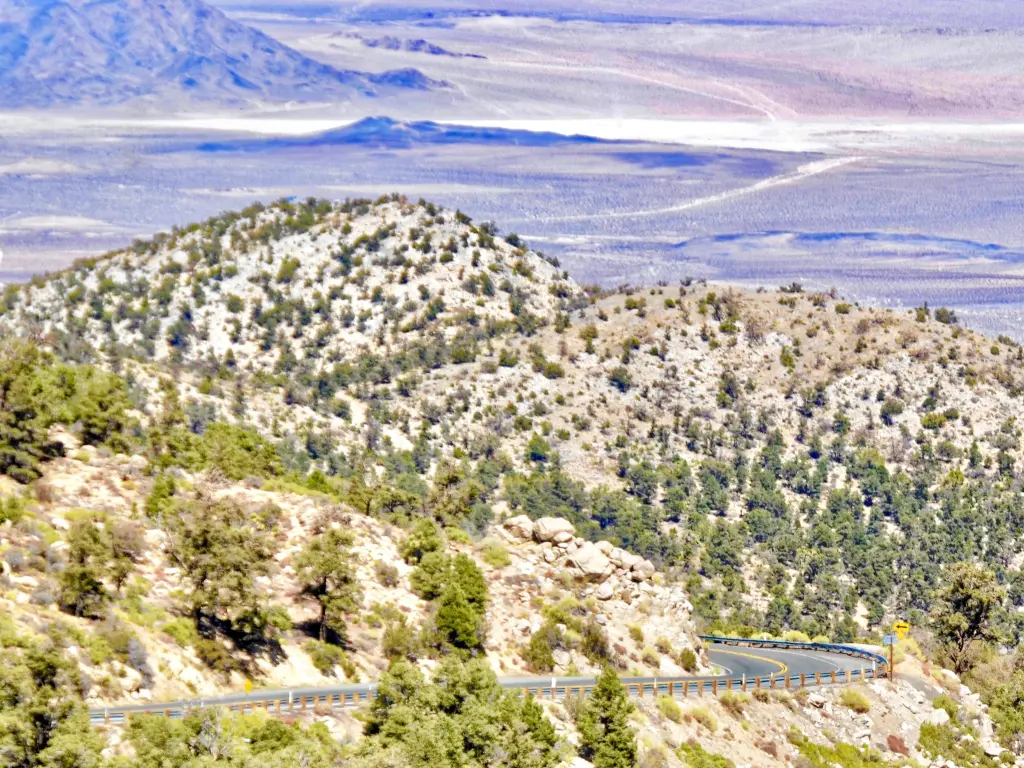
Driving to Big Bear via CA-38
If you're traveling on busy weekends or through the holiday period, CA-38 offers a good alternative. That's because this route often has less traffic.
It's pretty straightforward to navigate. From San Bernardino, head towards Mentone, where you'll join CA-38. It's a winding road that offers spectacular views across the mountains. If you're looking to camp out, there are several campgrounds along this route that give good access to South Fork Trail.
CA-38 takes you to Big Bear City before descending towards Lucerne on CA-18. If you want to visit Big Bear Lake simply turn east and follow either Big Bear Blvd or North Shore Drive to reach the dam.
There are some steep drops on this route, but for the most part they're protected by barriers. And of course, the same advice about driving in winter weather conditions applies.
Traveling to Big Bear via CA-330
Finally, to get your mountain trip started in style, there's also the route along CA-330. This winding route includes several tight switchbacks before Running Springs if you're driving from Redlands.
From your starting point in San Bernardino, head to the northeast edge of the city and pick up CA-330, which winds up into the mountains before merging onto CA-18 at Running Springs.
Continuing along CA-18 you'll pass Lakeview Point before reaching Big Bear Valley. Follow North Shore Drive for some stunning views across the lake then complete your drive by heading through Big Bear City and on along CA-18 towards Lucerne.
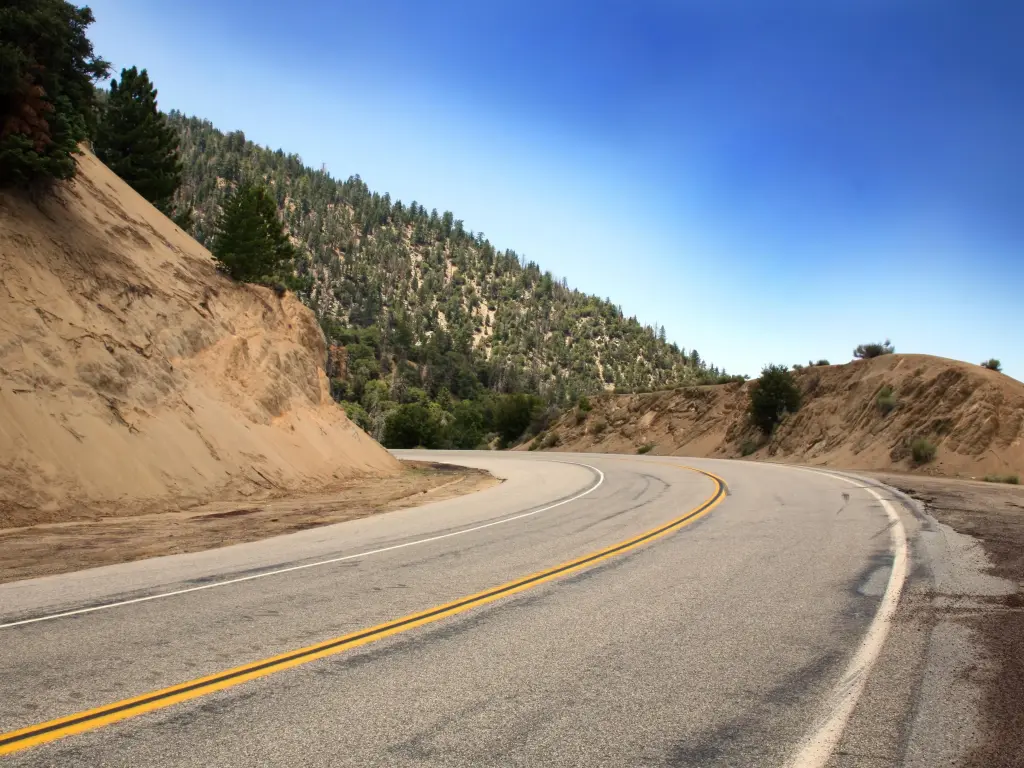
Things to know that can impact the drive on the safest route to Big Bear
Your trip to Big Bear Valley will take you up to an altitude of 6,752 feet via some twisty mountain roads, so this might not be your first choice of destination if you're scared of heights.
Most of the way, there will be guardrails between you and any big drops, but early in the drive, you may encounter stretches without. You'll also encounter sharp switchbacks, as we've mentioned. Drive carefully and always follow the advised speed limits for the turns.
Rest stops are limited along the mountainous route, but it's less than an hour between San Bernardino and Big Bear Lake, so you won't have to wait long before you reach the many amenities there.
To save time on your trip, try to fuel up before you set out. If you need to stop for gas, there are gas stations when you reach Big Bear Lake.
Unlike many other mountain drives, you can expect good cell coverage once you reach Big Bear Lake. However, during the ascent, you might hit dead spots or patches of limited coverage.
Finally, as this is an accessible mountain destination that's within easy reach of LA and San Bernardino, you're likely to experience increased traffic on weekends and holidays, especially during the summer vacation period and the ski season.
Tips to drive to Big Bear in the safest way
As you've already discovered, it can be challenging to drive to Big Bear in certain conditions. The mountain roads are unavoidable if you want to reach Big Bear, so drive carefully, become accustomed to the vehicle's brake capacity, and use lower gears. You should also pay attention to road signs, and don't stop in areas that are prone to rockslides.

Here are our top tips to make your journey as safe as possible:
- Make the trip during daylight to make sure you have better visibility.
- Avoid traveling on weekends or peak holiday times.
- Before starting the drive, check for road closures with Caltrans.
- If traveling in winter or spring, make sure your vehicle is fitted with winter tires or carry chains.
- If you're hiring a car, make sure you get a vehicle that's suited to the weather conditions ahead - request chains or winter tires ahead of time if necessary.
- Make sure you have adequate fuel for your journey. We recommend fueling up at Redlands, San Bernardino or Lucerne Valley to avoid running low.
- Don't drive in heavy snowstorms. Stay in a hotel nearby instead.
- Check weather, traffic and travel advisories before setting out using the helpful Caltrans Quickmap.
- Do a “virtual drive” using Google Street View so that you can prepare yourself and familiarize yourself with the route beforehand.
- If possible, have two designated drivers to share the load so you can stay fresh.
- Be mindful of HGVs and their limitations on steep inclines. Look ahead for heavy trucks crawling along the slow lane. Anticipate this and merge into the fast lane, ahead of them.
- If you're not comfortable in high altitudes, prepare for the elevation change and take breaks.
- Carry essentials such as a first aid kit, blankets, flashlights and water.
Alternatives to driving yourself to Big Bear
After reading this far you might have decided that you don't fancy taking on the drive to Big Bear by yourself. If this is the case, there are a few other options that mean you can still enjoy time in this stunning part of California.
If you're staying in a resort, you might be able to book a shuttle from Ontario International Airport. Check ahead when planning your trip to ensure you book accommodation that offers this service. Even if a shuttle isn't available, you can book a taxi 24/7 to and from Big Bear.
For a more affordable option, the Mountain Transit is a bus service that runs throughout Big Bear and even has routes from San Bernardino. It's a little less convenient than picking up a taxi on arrival, but it still means you can sit back and relax as someone else does the mountain driving on your behalf.
Best time to drive to Big Bear
The fabulous scenery around Big Bear will be very different depending on when you take your trip, with amazing hiking and outdoor pursuits through the summer and the obvious attractions of all the winter sports on offer.
If you're traveling in summer, keep a close watch for wildlife on the road, as there is increased animal activity through the warmer months. You might also encounter pedestrians on the road as it's such a popular time for hiking.
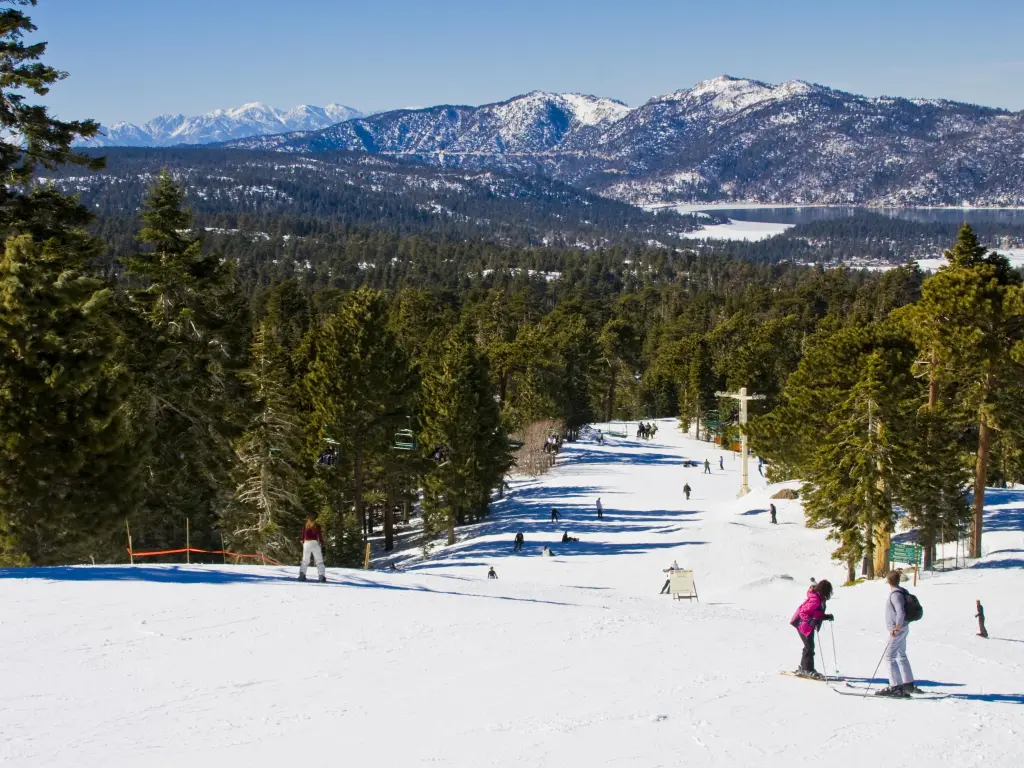
The high altitude means you might not feel the same intense summer heat that you would be aware of at lower levels, but you'll still be at risk of UV exposure, so come prepared with sunscreen and hats.
Seeing as summer is such a popular time to visit Big Bear and the surrounding area, we'd also recommend making advance bookings for accommodation ahead of your visit. Campgrounds in the area fill fast in summer.
On the flip side, snow and ice dominate the landscape in winter, so you should expect more challenging conditions on the roads. There's also increased traffic as visitors head to the area through the ski season, so take extra care as you make your way towards Big Bear.
Always drive prepared for the conditions, with appropriate tires and anti-freeze, and make sure the heating in your vehicle is in working order.
You'll also have reduced daylight hours, so make sure you start early enough to avoid night-time driving when visibility and temperatures drop significantly.

